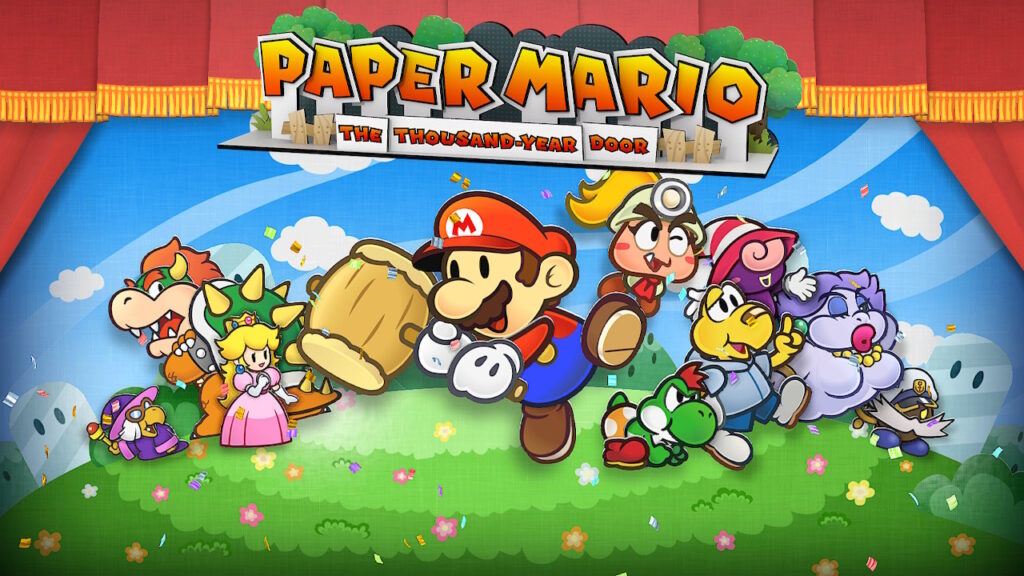Originally released for the Nintendo GameCube in 2004, Paper Mario: The Thousand-Year Door (TTYD) is a beloved Nintendo role-playing adventure. Fortunately, those who missed the original version (me included) can now experience this fantastical journey for themselves, thanks to the Nintendo Switch remake. But does this remake soar like a paper airplane? Or fold under the pressure?
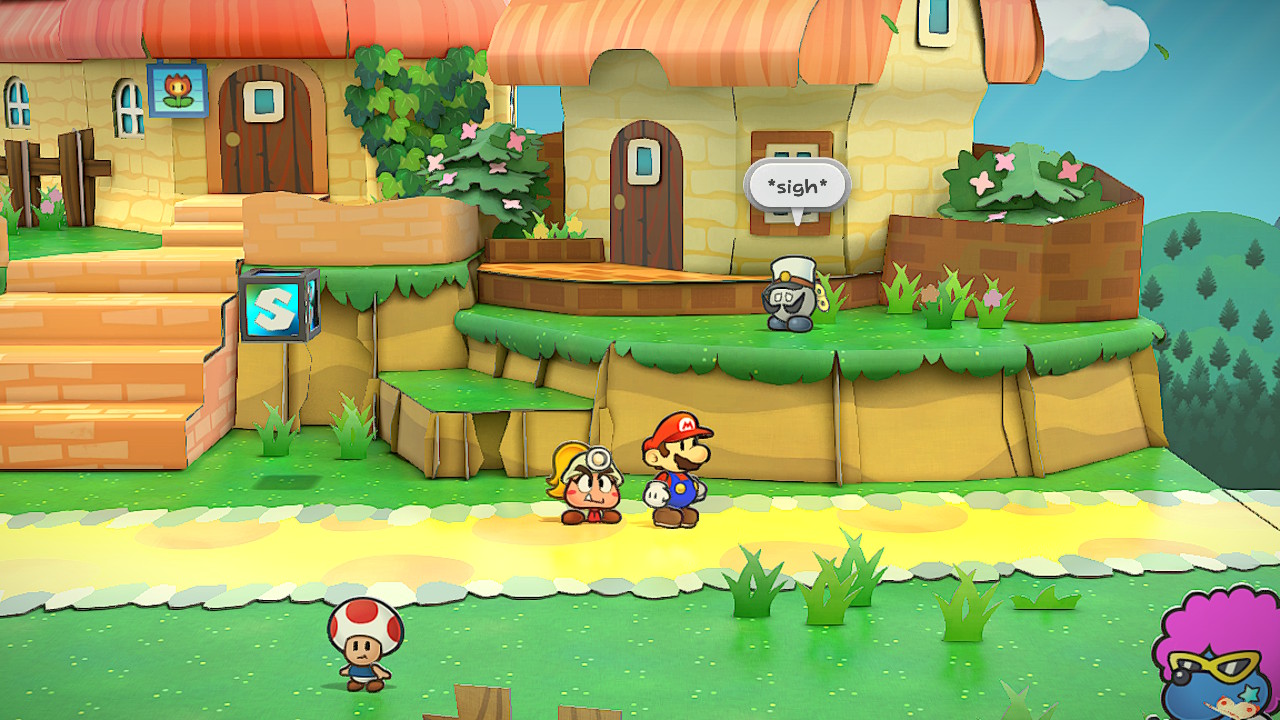
TTYD opens in a storybook fashion, as it describes a city that was destroyed by an unknown cataclysm a thousand years prior, before it sank to the deepest depths of the ocean. A new city was built in its place, known as Rogueport, but the fabled story of a treasure that sank to the bottom of the ocean alongside that city, still exists. Known as the Thousand-Year Door, it is said that untold riches can be found within, and whoever can gather all seven Crystal Stars will gain access to the incredible treasure inside.
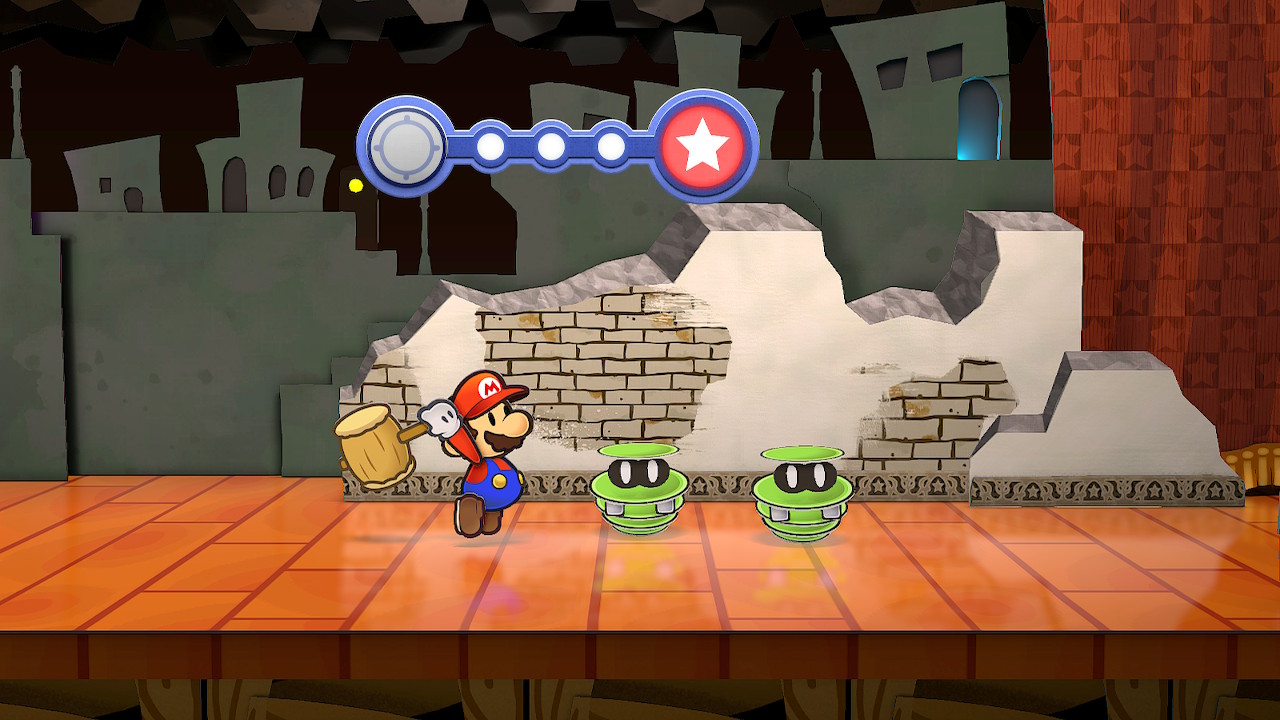
This is where the current events of TTYD begin. Mario receives a letter from Peach with a magical treasure map, as she requested the mustachioed plumber’s help to find the Crystal Stars and find the fabled treasure. However, Peach is quickly kidnapped, and it is up to Mario and a band of unlikely heroes to seek out the Crystal Stars, rescue Peach, and save the world from ruin. The events of TTYD begin quite slowly, but it easily became the best Mario-centric story I have ever experienced. TTYD follows many RPG cliches, but due to the brilliant writing, the wonderous elements of the Mario world, and the loveable cast of extended characters, it evolves into a memorable adventure. Despite the presence of a fairly one-note villain who seeks to ‘conquer the world’ because he is evil, the compelling and genuinely funny writing kept me coming back to see how the story would unfold. Without spoiling anything from a two-decade-old game, the final act elegantly weaves multiple plot threads to deliver an unpredictable and epic finale.
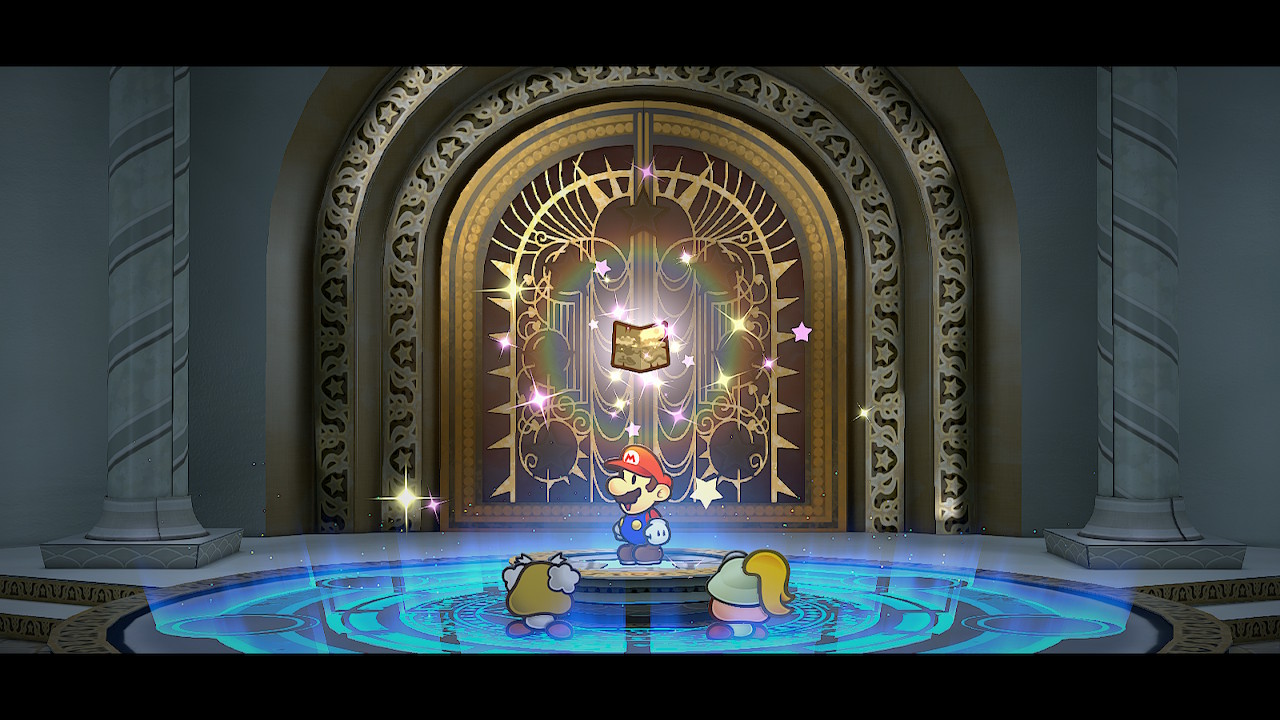
I want to focus on the brilliant quality of writing found in TTYD. Across eight chapters, the plot introduces an assortment of companions and an extended cast of characters, but due to the fantastic quality of the writing, each felt truly unique. For example, abilities in TTYD are given to Mario by beings held captive in treasure chests, but once freed, they show their true selves and ‘curse’ our hero. This may be the best way I have ever received special abilities in a video game, as these evil beings genuinely believe they are cursing Mario, by giving him special powers to traverse the world. These scenes could have easily been overdone, but the intricate writing makes each and every one of these encounters utterly hilarious. Even each of Mario’s teammates, who are recruited across the events of the story are each introduced in unique and well-written ways, some with genuinely heartbreaking motivations.
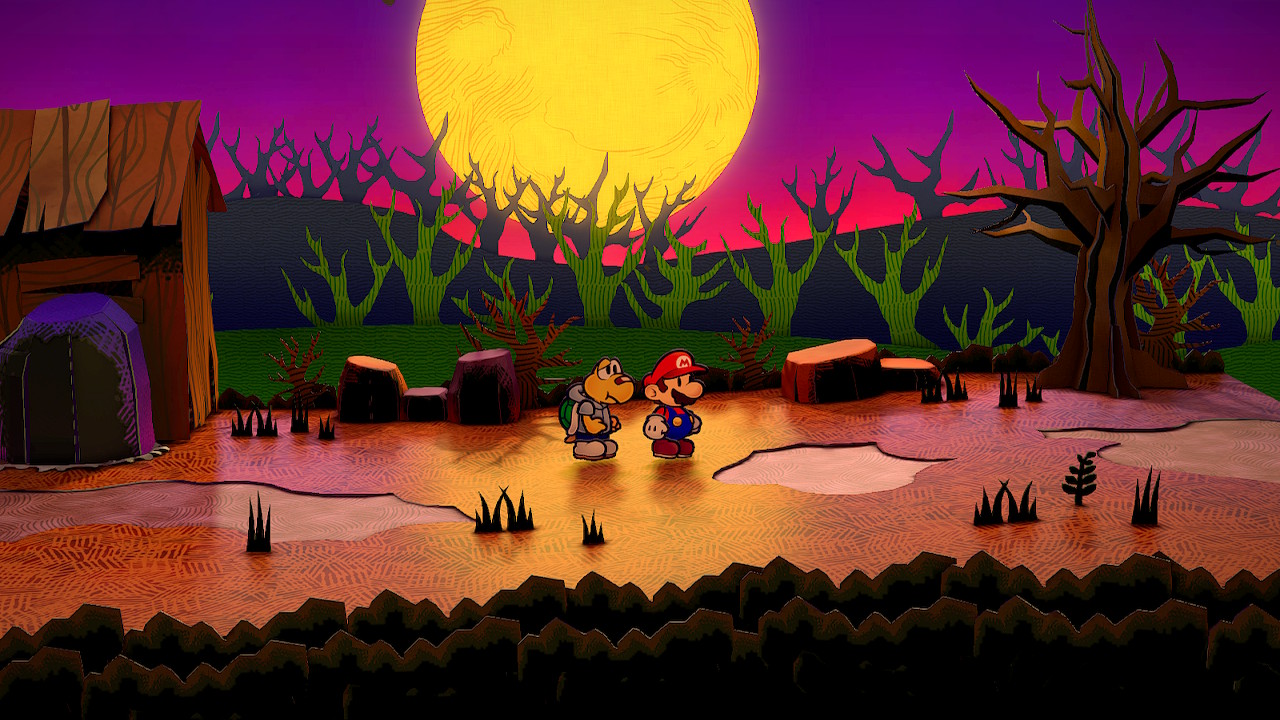
Each chapter also feels distinct and fresh over the 30+ hour adventure. Mario will travel to a fight club with a dark secret, find himself stranded on a deserted island, encounter an evil ghost who wants to steal his body, and even conduct a detective-style adventure on a train. One of my favourite elements across TTYD would have to be the short Bowser scenes that take place between each chapter. Bowser is portrayed as an evil individual who cannot catch a break, and watching him continuously fail on his quest to one-up Mario was hilarious and also helped provide a nice breather from the moment-to-moment gameplay. However, it must be said that TTYD suffers from an excessive amount of backtracking and padding, which makes certain sections of the experience feel tedious and bloated. TTYD remake tries to mitigate the backtracking requirements by adding in a designated fast-travel location (which did help improve one extremely lengthy backtracking sequence found in the original release), but multiple sections of the adventure still feel unnecessarily lengthened, which is one noticeable wrinkle on what is a brilliant RPG narrative.
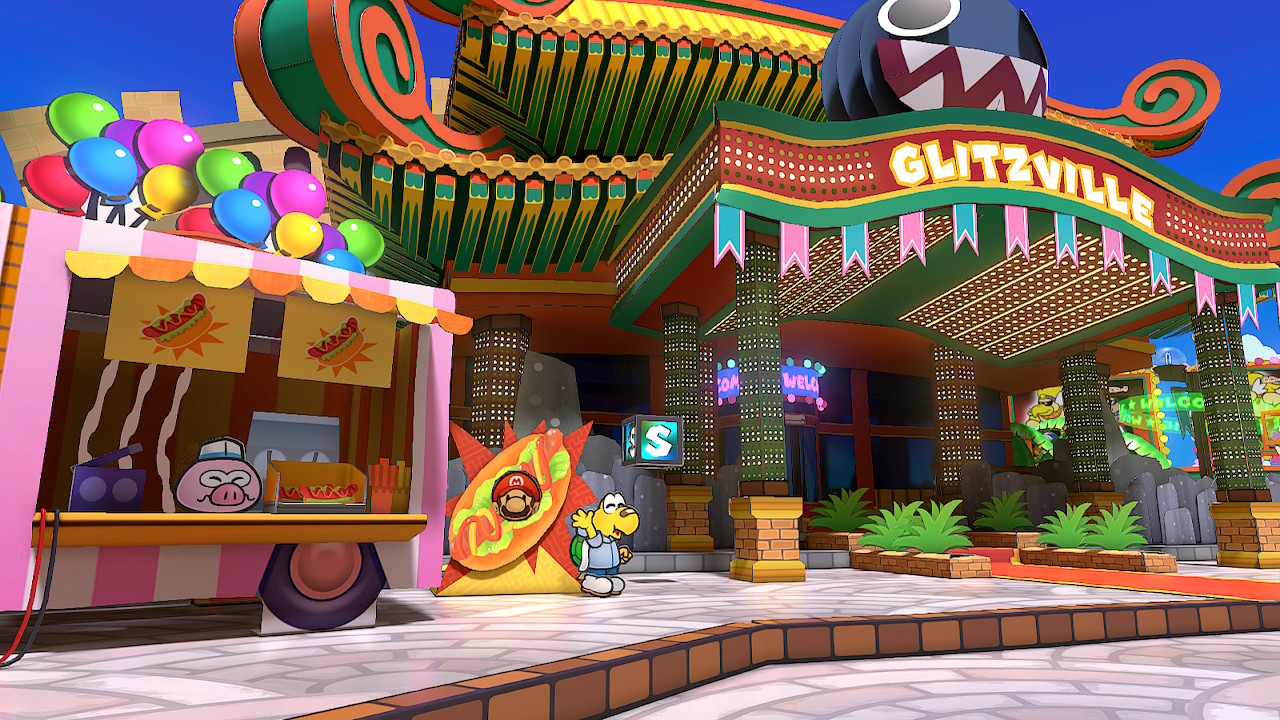
READ: Princess Peach: Showtime! Review
Like other Paper Mario adventures, the combat in TTYD is turn-based, with each team member possessing their own selection of techniques and attacks to demolish enemies. Each attack requires some sort of interactivity to deliver the most damage with additional benefits. For example, when dishing out damage with Mario’s hammer, players must pull the analog stick to the left and let go at the right moment to deliver maximum damage, or even when Mario jumps on his foes, players must time their button presses to deal extra hurt to their enemies. The same interactivity can be found within the battle environment itself. Each battle takes place on a stage with an audience watching the events unfold. However, the audience isn’t just a passive aesthetic addition, the audience will rush the stage and drop lighting equipment onto you and your foes, throw items and garbage at the performers, with even crowd excitement used to build up your special attack meter. The interactive elements of both battles and the stage location itself make these encounters charming and unique.
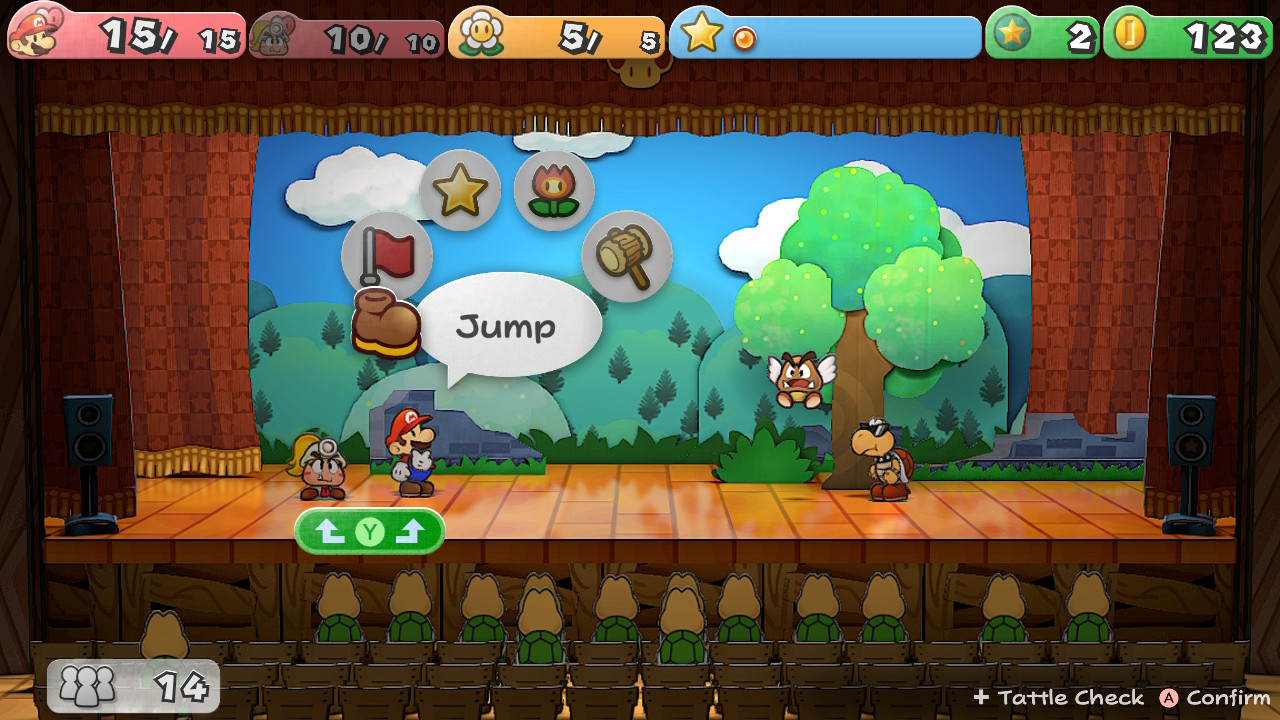
Successfully completing the associated mini games designated to each attack will make battles go quicker, as more offensive damage will be delivered, but players can also conduct additional defensive damage. Players can Guard against attacks to minimise damage, and due to the fairly generous window, it’s quite easy to achieve. However, more adventurous players can try and use a Super Guard, which has a very small window of success, but can actually negate all damage and even hurt certain opponents if done correctly. It’s challenging to learn but satisfying to finally master.

I think my biggest issue with the combat in TTYD is the lack of challenge and evolution across the adventure. I never found myself close to losing a single battle, which included completing the Pit of 100 Trials (more later). Sure, for additional challenge players could decide to avoid increasing their overall health bar, or never use any Badges (items that can be equipped to provide additional attacks and extra abilities), but regardless, I never felt there was ever much challenge found within the battles themselves. Combat also never really evolves from the first battle. While you will deliver more damage and have access to additional abilities, players could fundamentally beat the entire game fairly easily by only using Mario’s most basic abilities. Now, I know what you’re thinking, this is still a Mario game, so of course it won’t be incredibly challenging due to its target audience, but I still wish some of the important story battles provided the same challenge that the narrative itself emphasised.

TTYD does offer players the chance to partake in the Pit of 100 Trials, which essentially requires players to survive 100 battles in a row to claim victory; something I was able to achieve on my first attempt. The concept of these trials sounds great, but in practice, it simply isn’t as fun, as challenging, or as rewarding as I had expected. Now, please keep in mind I didn’t start the Pit of 100 Trials until I finished the main story, but I didn’t find the trials very difficult until I reached the mid-80s. The downside of the Pit of 100 Trials is that there are no checkpoints, so do not attempt these until you are ready for the long haul; it took me almost 4 hours to complete. The rewards are also lackluster for the amount of time it takes to complete, with only some unique badges awarded to those who survive the trials. I am glad I achieved victory in the Pit of 100 Trials, but it’s hard to recommend the lengthy task to others.
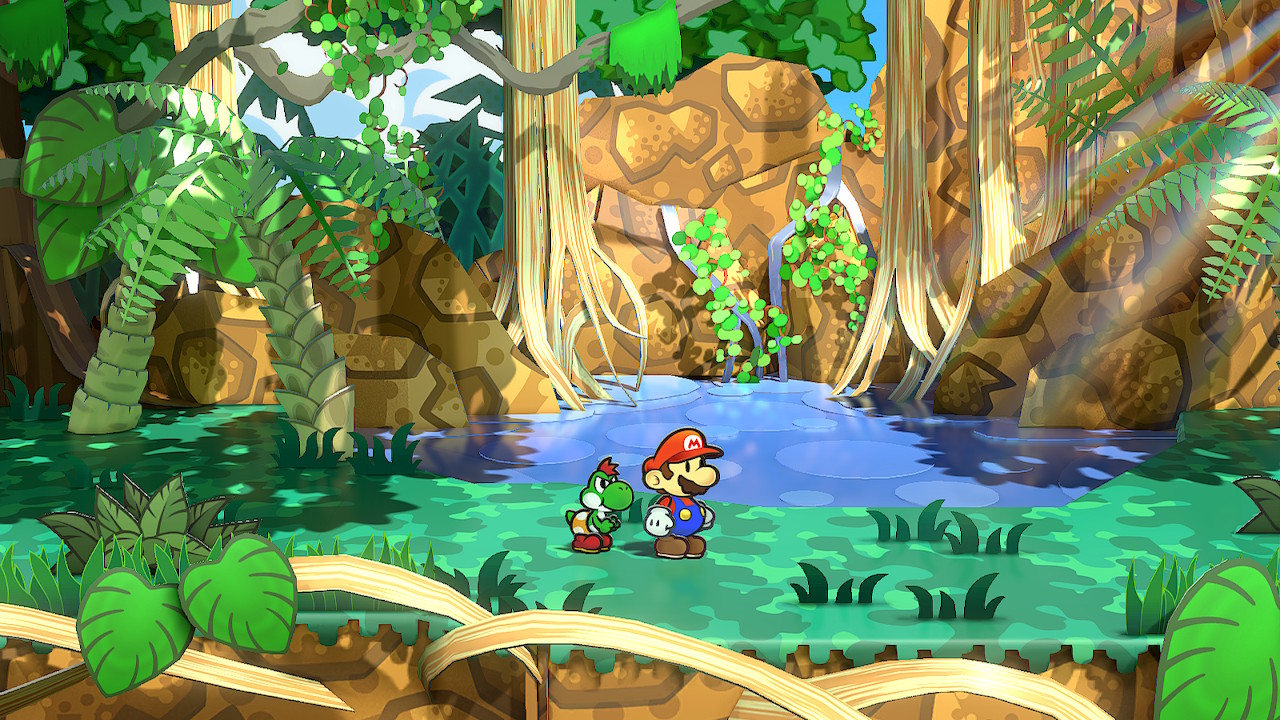
TTYD also provides players with a selection of puzzles throughout the adventure, but like the combat issues mentioned above, they lack challenge. Most puzzles are fairly straightforward, but that cannot be said with the puzzles showcased during the final act. These puzzles are genuinely fantastic and force players to use the unique abilities of each teammate to solve them. These final puzzles offer a small glimpse at the creative challenges that could have been spread across the entire adventure, and while I loved solving them, it left me yearning to encounter that same creativity across the rest of the adventure.
Managing your cast of teammates in TTYD has also been improved over the original game with the introduction of the Partner Ring. This new feature allows players to quickly switch their allies on the fly using the left bumper, a fantastic quality-of-life improvement that made changing your accompanied ally more streamlined.
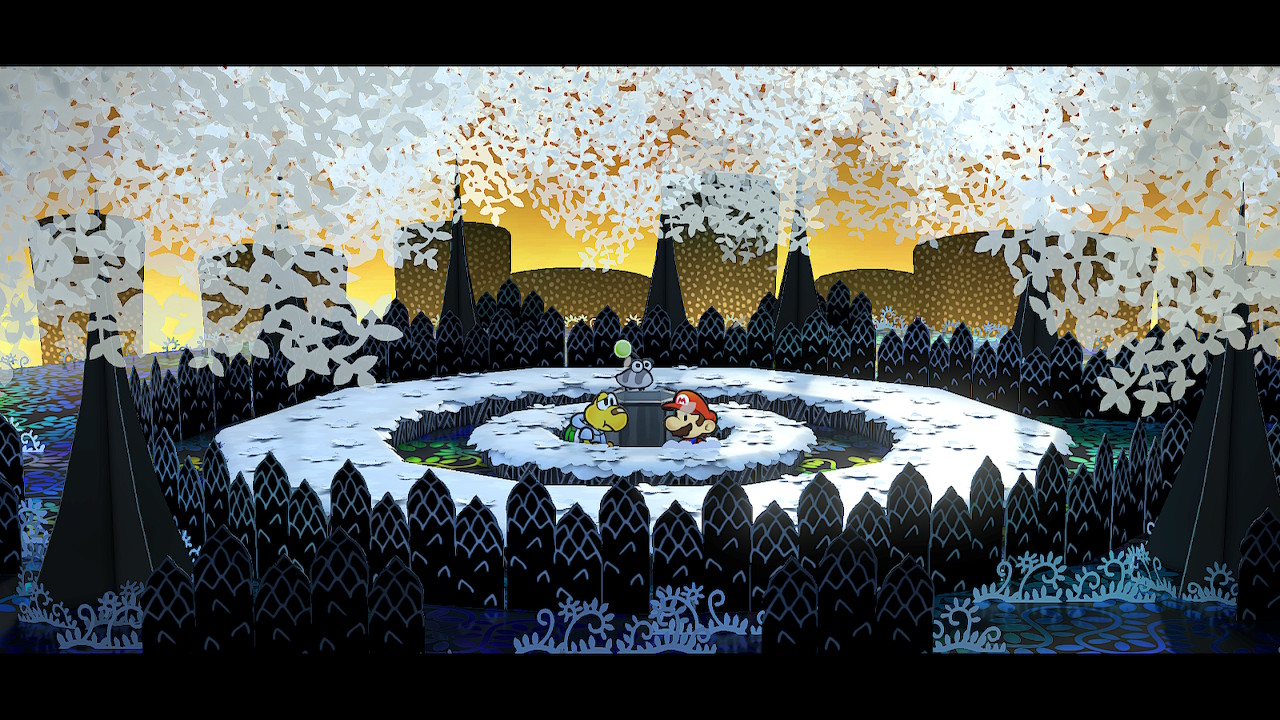
One of the best elements of TTYD is the magnificent soundtrack. Within the first hour of TTYD, I was introduced to an incredible selection of iconic, upbeat, and banger-certified tracks that had me dancing along one after another. The impeccable quality does not let up, with a bevy of guitars, xylophones, drums, violins, and bass all utilised to produce one of the best soundtracks I have experienced in years; there’s even some ridiculously brilliant kazoo work found in TTYD; and I am all for it. While I absolutely adored the musical offering, it should be noted for fans of the original GameCube release that Mario can equip a Badge that allows players to listen to the original soundtrack (if they prefer).
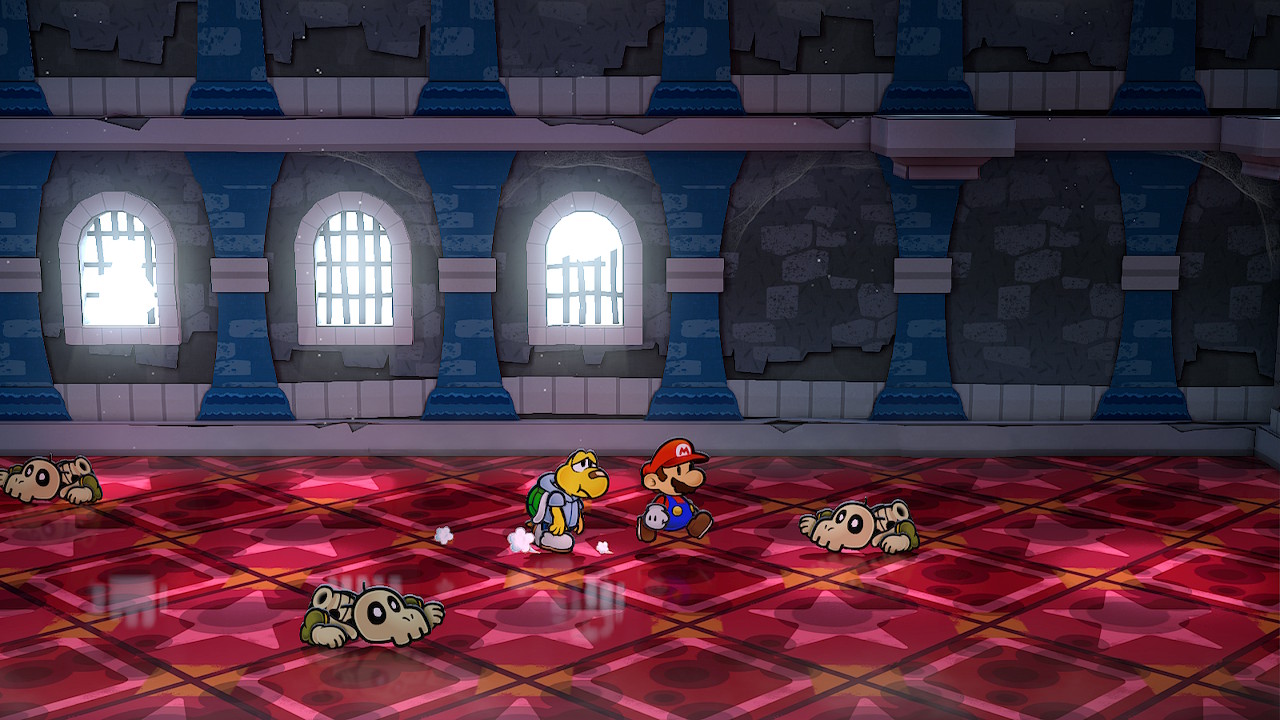
Visually TTYD remake looks vastly improved over the original release, with the paper-like visuals looking gorgeous on the Nintendo Switch. The Paper Mario world is incredibly striking, with black outlines used to help create a visual novel-esque viewing experience. Each area is intricately built to look like a sleek diorama, with crisp visuals and well-implemented gradients used to emphasise the design of the world. TTYD remake also benefits from improved lighting, and even certain surfaces of the world produce reflections as you explore. Personally, TTYD remake could arguably be one of the best-looking experiences on the Nintendo Switch, simply due to the sleek and unique visual style. Even small touches help add to the visual adventure, like when a house crumples up like a piece of scrap paper as you leave; it’s stunning. It’s worth mentioning that the TTYD remake runs at 30fps, and while I am not diving into the fps debate within this review, I can confirm the visual experience was never compromised, and I never encountered a single performance or visual issue across my entire playthrough.
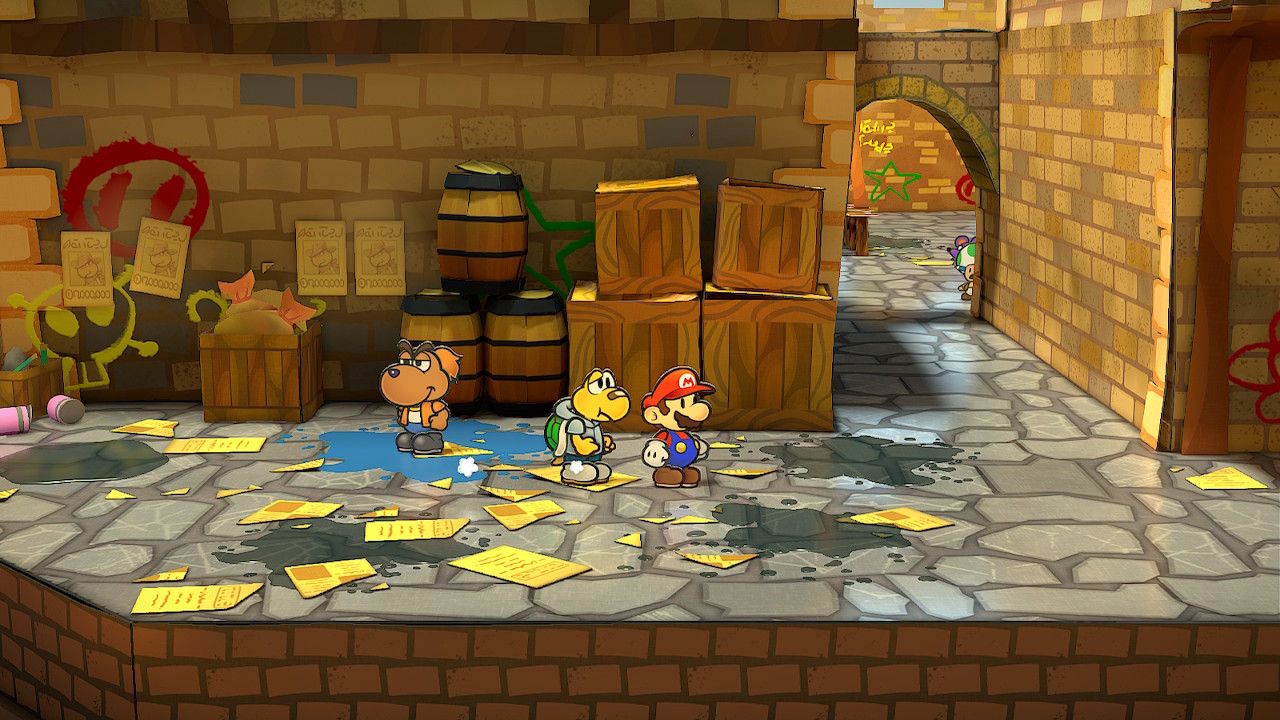
The Paper Mario remake also features many other quality-of-life upgrades, which include the ability to hold more coins than in the original release, a newly added hint system (which can be ignored), more ways to generally earn coins, as well as the previously mentioned fast travel room and Partner Ring. The remake also includes new additions, such as more badges, an art and sound gallery, extended tutorials, newly added sounds, and even two new secret bosses. TTYD remake offers players an extended selection of goodies to enjoy, something that I believe original GameCube fans will truly appreciate.
PAPER MARIO: THE THOUSAND-YEAR DOOR REVIEW
After finishing the Paper Mario remake, I envy those who were able to play the original release, as I can only imagine how happy those original fans would be with the Nintendo Switch release. TTYD offers the best Mario centric story I have ever experienced, with brilliant writing across the entire 30+ hour adventure. While some unnecessary backtracking and fairly easy combat do hinder the overall experience, it’s hard to play TTYD without a smile on your face due to the magnificent soundtrack and sleek visuals.
TTYD is a brilliant adventure for newcomers to enjoy, and I believe fans of the original GameCube will be delighted by the many quality-of-life improvements found in the remake.
PROS
-
Interactive elements of battles and the stage environment.
-
High quality of writing that is genuinely hilarious.
-
Arguably the best Mario centric story ever.
-
Beautiful, crisp, and sleek visuals.
-
Amazing soundtrack.
CONS
-
Extended backtracking and padding.
-
The combat is incredibly easy.
